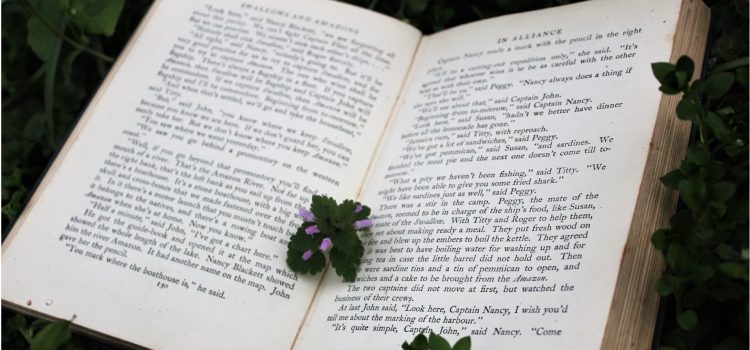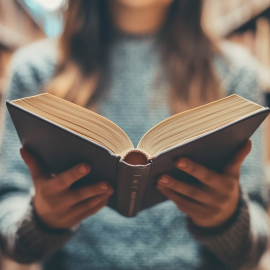

This article is an excerpt from the Shortform book guide to "The Sun and Her Flowers" by Rupi Kaur. Shortform has the world's best summaries and analyses of books you should be reading.
Like this article? Sign up for a free trial here.
Looking for an overview of The Sun and Her Flowers chapters? What is the meaning behind each chapter in the book? What themes can we pull out?
In Rupi Kaur’s book of poems, The Sun and Her Flowers, there are five chapters: Wilting, Falling, Rooting, Rising, and Blooming. Each chapter explores themes from Kaur’s own life, such as love and loss, and connects them to broader social issues.
Read on for an overview of the key themes and meanings behind The Sun and Her Flowers chapters.
Overview of The Sun and Her Flowers Chapters
The chapters in The Sun and Her Flowers present a collection of poems by poet and visual artist Rupi Kaur. Through her minimalist style of verse and drawings, Kaur connects her own deep emotional experiences to larger social issues around her. In this collection, Kaur explores the end of a relationship, her traumas and insecurities, and the people and relationships that inspire her and help her heal. The chapters of The Sun and Her Flowers are organized as follows:
- Feeling Pain covers the “Wilting” chapter of The Sun and Her Flowers and Kaur’s description of ending an abusive relationship.
- Feeling Empty covers the “Falling” chapter of The Sun and Her Flowers and Kaur’s exploration of her deep-seated depression, insecurities, and trauma from childhood sexual abuse.
- Feeling Hope covers the “Rooting,” “Rising,” and “Blooming” chapters of The Sun and Her Flowers and Kaur’s newfound appreciation for her family, her cultural background, and her loving partner.
The Sun and Her Flowers: Wilting Chapter
Many of the poems in “Wilting” talk about the attraction and love Kaur felt toward her partner when they were together. They express the insecurities and desires that kept her in the relationship despite her partner’s abuse. Kaur expresses how she was attracted to the idea of a relationship, rather than being attracted to her partner. She expresses two feelings in particular:
- Desiring affection: Kaur describes how much she needed to feel wanted in her relationship, both romantically and sexually. When her ex cheated on her or seemed uninterested in her, Kaur wondered how she could change her appearance or behavior so he’d show her affection again.
- Fearing loneliness: In addition, Kaur talks about her fear of being alone. This put her in a position where she wanted to be in any relationship at all—a want that kept her with her ex despite his abusive behavior.
The Sun and Her Flowers: Falling Chapter
Even after leaving her abusive partner and beginning to recover emotionally, Kaur still had a long road of healing ahead. After describing her abusive relationship in “Wilting,” the “Falling” chapter of The Sun and Her Flowers then reflects on the root causes that led Kaur to that relationship in the first place. Many of the poems in “Falling” explore Kaur’s feelings of emptiness, depression, and anxiety stemming from deeper traumatic events and powerful insecurities.
In particular, Kaur consistently references two main sources of her empty feelings:
- Negative body image
- Sexual trauma
Negative Body Image
Some of Kaur’s empty feelings and longing to feel love come from her negative body image. She often feels like her physical appearance is inadequate, or that she’s lacking the traits of a “beautiful” woman—thin eyebrows, little to no body hair, an hourglass figure, and so on. Kaur explores how this is a particular challenge for a woman of color living in the West, which she says bases beauty standards on white women.
Sexual Trauma
Another major source of Kaur’s empty feelings is a sexually traumatic experience in her past. Kaur’s uncle raped her when she was a child; a traumatic experience that made sex and intimacy extremely difficult for her for a long time. Kaur talks about this experience from three different perspectives.
The Sun and Her Flowers: Rooting, Rising, and Blooming Chapters
Despite the challenges she faced and the pain and emptiness they brought her, Kaur ends The Sun and Her Flowers on a positive, hopeful note. In the last three chapters of The Sun and Her Flowers (“Rooting”, “Rising”, and “Blooming”), she describes feeling a sense of belonging in her family and romantic life. Though challenges remain, Kaur knows she has the strength to face them and that the people she loves will help her along the way.
In particular, Kaur talks about two places where she finds meaning, hope, and a sense of belonging:
- Her familial and cultural background
- Her new relationship
Familial and Cultural Background
Kaur talks about finding a new sense of belonging through family and cultural background. In the “Rooting” section of the book, Kaur shows newfound appreciation for her Indian heritage and her family’s experience emigrating from India to Canada. While she appreciates many aspects of her cultural background, Kaur also criticizes certain aspects of South Asian culture as misogynistic.
Falling in Love
Kaur’s sense of belonging extends beyond her family and into her romantic life as well. In the “Rising” and “Blooming” sections of the book, she describes falling in love and entering a new and positive relationship. She often describes how novel or unusual this feels—it’s her first time in a healthy relationship, and she’s not used to positive romantic and sexual experiences.
Despite her unease, Kaur feels hopeful about the future and appreciates her partner’s kindness and love. Most of all, though, Kaur is able to push past her insecurities and recognize that this is the kind of relationship that she deserves. Kaur learns how to love and appreciate herself—a challenging and often inconsistent process that helps her truly feel like she belongs in her own skin.

———End of Preview———
Like what you just read? Read the rest of the world's best book summary and analysis of Rupi Kaur's "The Sun and Her Flowers" at Shortform.
Here's what you'll find in our full The Sun and Her Flowers summary:
- Explanations and context to better understand Rupi Kaur's poems
- A look into the recurring themes of Kaur's poetry
- What Kaur's poetry can teach us about society and ourselves






